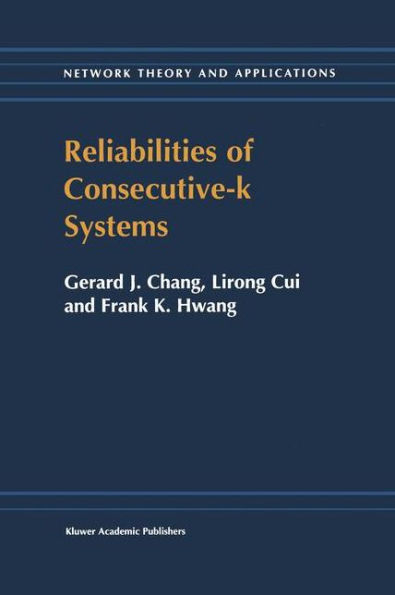Reliabilities of Consecutive-k Systems
The consecutive-k system was first studied around 1980, and it soon became a very popular subject. The reasons were many-folded, includ ing: 1. The system is simple and natural. So most people can understand it and many can do some analysis. Yet it can grow in many directions and there is no lack of new topics. 2. The system is simple enough to become a prototype for demonstrat ing various ideas related to reliability. For example, the interesting concept of component importance works best with the consecutive-k system. 3. The system is supported by many applications. Twenty years have gone and hundreds of papers have been published on the subject. This seems to be a good time for retrospect and to sort the scattered material into a book. Besides providing our own per spective, the book will also serve as an easy reference to the numerous ramifications of the subject. It is hoped that a summary of work in the current period will become the seed of future break-through.
1115985309
Reliabilities of Consecutive-k Systems
The consecutive-k system was first studied around 1980, and it soon became a very popular subject. The reasons were many-folded, includ ing: 1. The system is simple and natural. So most people can understand it and many can do some analysis. Yet it can grow in many directions and there is no lack of new topics. 2. The system is simple enough to become a prototype for demonstrat ing various ideas related to reliability. For example, the interesting concept of component importance works best with the consecutive-k system. 3. The system is supported by many applications. Twenty years have gone and hundreds of papers have been published on the subject. This seems to be a good time for retrospect and to sort the scattered material into a book. Besides providing our own per spective, the book will also serve as an easy reference to the numerous ramifications of the subject. It is hoped that a summary of work in the current period will become the seed of future break-through.
109.99
In Stock
5
1

Reliabilities of Consecutive-k Systems
212
Reliabilities of Consecutive-k Systems
212Hardcover(2000)
$109.99
109.99
In Stock

Product Details
| ISBN-13: | 9780792366614 |
|---|---|
| Publisher: | Springer US |
| Publication date: | 11/30/2000 |
| Series: | Network Theory and Applications , #4 |
| Edition description: | 2000 |
| Pages: | 212 |
| Product dimensions: | 6.10(w) x 9.25(h) x 0.02(d) |
From the B&N Reads Blog
